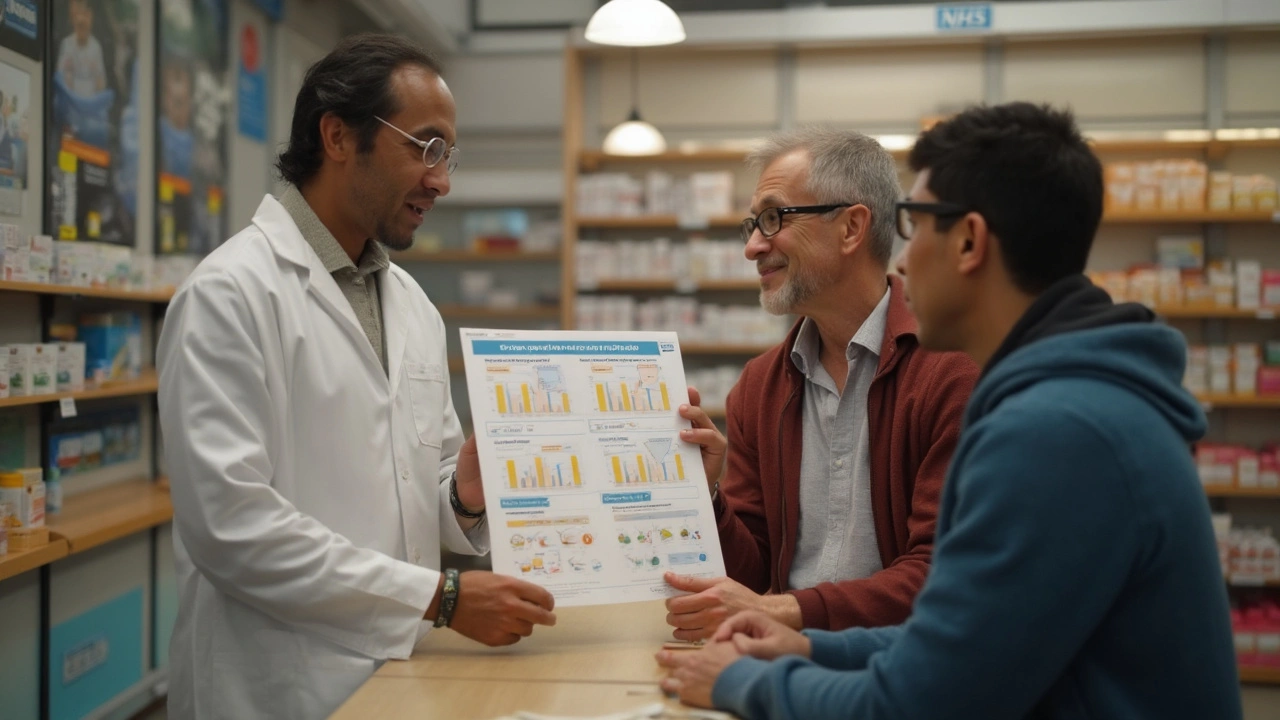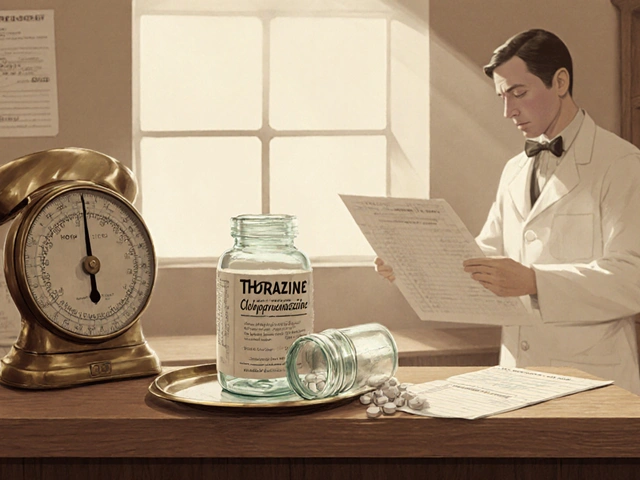Ever heard a friend brag about scoring their diabetes pills for a crazy-low price? Or maybe you’ve shopped for Glipizide and wondered if the next-gen options could possibly be worth the sticker shock. The reality is, paying for diabetes meds in Australia or anywhere isn’t just about the pill itself. It’s about juggling insurance, coupons, pharmacy markups, and the unpredictable cost spikes that seem to happen overnight. If you’re not careful, your yearly bill can snowball—even when you do everything right. So, what’s actually the cheapest, and where can real savings be found?
What Glipizide Costs Per Year—And How Coupons Change the Game
Grab a box of generic Glipizide and you won’t be wowed by fancy branding. It’s the old workhorse everyone’s heard of—a sulfonylurea helping the pancreas push out more insulin. In Australia, with a standard PBS prescription, a month’s supply of generic Glipizide can set you back as little as AUD $6.50 on concession or around $30 if you’re paying the Private script price. Multiply by 12, and we’re talking $78 to $360 per year—before any discounts. But the story doesn’t end there.
What a lot of Aussies don’t realise: pharmacy loyalty cards, online discount sites, and drug company coupons are worth their weight in gold. A popular e-script platform has been known to chop private prices nearly in half with a single code. If you’re tech-savvy, you can trim $10–$25 off every script refill. Some even accept US-based coupons for generics—yes, even in Australia—although you may need to ask your pharmacist (and sometimes face a skeptical look). Add in government safety nets for chronic illness, and smart shoppers can push annual out-of-pocket costs for Glipizide below $100, even on private insurance or if you aren’t bulk-billed.
But don’t get too comfortable. Stock shortages and sudden manufacturer recalls have driven prices up by 30% in the last five years, according to data from the Pharmaceutical Benefits Scheme (PBS). Pharmacy chains in big cities tend to hold prices low, but regional areas sometimes see a markup of up to 70% for the “same” box. If you travel a lot (or have relatives outside the city), switching where you buy could mean paying double literally for the identical pill.
Yearly Cost of Next-Gen Diabetes Pills: Sticker Shock or Hidden Value?
Now let’s get into the big question: How do Glipizide’s next-gen rivals stack up in terms of costs? Meds like DPP-4 inhibitors (sitagliptin, brand name Januvia) or SGLT2 inhibitors (dapagliflozin, empagliflozin) have burst onto the market in the last decade. They promise fewer hypos, maybe a side perk of weight loss, and even heart protections. But that comes at a price—literally.
A brand-new script for an SGLT2 inhibitor, even with PBS, averages $40–$50 per month. That’s $480–$600 annually if you’re staying in the PBS safety net. Don’t have a concession card? Try $1,200–$1,800 out-of-pocket in a year. Some combo pills soar past the $2,000 annual mark—before extras like GP reviews or extra glucose tests some doctors require when starting a new med. And unlike generic Glipizide, coupon programs for these are scarce in Australia. The majority are run through manufacturer patient-assistance, which is means-tested and can involve hefty paperwork. Pharmacies don’t budge on the price for next-gen brands until generics arrive, which can take years.
Here’s where some Aussies pull a sneaky: they compare local pharmacy prices with international online pharmacies, snagging FDA-approved versions at a fraction of the price. Be warned, importing drugs carries legal risks if you grab an unapproved variant, and customs can (and does) seize packages. Most people stick with PBS, using insurance to knock down the excess, though it won’t erase the cost gap. On insurance, don’t expect miracles—even top-tier private plans can have high co-pays or exclude the newer meds unless you meet strict criteria.
If you haven’t checked it yet, this Glipizide replacement cost analysis breaks down head-to-head annual prices for multiple new diabetes treatments. It updates as rebate programs shift, so it’s gold for reference if you feel lost comparing apples to oranges.

Insurance, Coupons, and Hidden Cost Hacks the System Doesn’t Want You to Know
Insurance is like a double-edged sword. On one hand, it’s supposed to cushion your wallet from nasty surprises. On the other, the fine print can leave you stranded. For Glipizide and most generics, almost every Aussie private and public plan covers the basics. Sometimes they even waive extras, especially for pensioners or people with a chronic condition. Here’s the catch: you usually have to stick with what’s on the approved list. Ask for a newer brand without ticking every “failed other therapy” box? You’ll pay full freight, every time.
With next-gen meds, the hoops multiply. Most insurers want to see a detailed trial of other drugs (metformin, then Glipizide or gliclazide, then and only then move to SGLT2s or DPP-4s). No paper trail? Your rebate vanishes—simple as that. Appeals are possible, but take months. Meanwhile, those denial letters don’t help at tax time. So, make your GP spell out every switch and failed drug on the pharmacy script; it’s more important than you think.
Smart tip: Go beyond classic health insurance. Travel insurance sometimes covers a month or two of chronic meds if you’re hospitalised in another state. Student insurance plans can pick up part of your out-of-pocket fees. And if you land a manufacturer coupon (less common but not unheard of for Australians), combine it with workplace health plans or ADF veteran programs for a rare double dip.
Don’t sleep on patient assistance programs, either. Even if you usually aren’t eligible, sudden job loss, a new disability, or a steep rent increase can open doors. Many programs re-check eligibility each year, so circumstances matter. Withdrawal forms and mail delays make it a hassle, but if you’re looking at $1,200 for a single box of next-gen meds, saving even $100 makes the paperwork worth it.
Glipizide vs Next-Gen Pills: Which Is Cheaper Over Time—and What Should You Really Do?
When people argue about diabetes drug costs, they often ignore the long view. Maybe you save a stack on Glipizide now, but get hit with more hypos or have to see your endocrinologist twice as often. Or maybe you pony up for a modern SGLT2 and suddenly your heart health improves so much you (and your insurance) save on hospital trips down the line. It’s tricky, because health isn’t just dollars—it’s about what you can live with day to day.
Fact: The average Aussie with type 2 diabetes who sticks with generic Glipizide pays less per year out of pocket than those on a newer pill—sometimes by a factor of five. If you’re on a student, pensioner, or low-income card, that gap just gets wider. But if your specialist pushes for a next-gen pill due to complications, every dollar paid now might dodge a costlier crisis later. Real Medicare billing data suggests people using SGLT2 inhibitors or GLP-1 medications end up with 10–20% fewer hospital days after two years. That’s money and stress saved, just not at the pharmacy counter.
So, how do you actually spend less? Shop around online and offline for pharmacy prices—don’t assume they’re all equal just because of the PBS. If you’re stuck on a pricey new med, talk to your doctor about dose adjustments or splitting pills (with the right, scored version), which can sometimes halve your spend. Double check every prescription for hidden fees, like dispensing charges and “compounding surcharges” that some smaller chemists sneak in for new brands. And keep all your receipts—pharmacy scripts can be partially claimed at tax time, while hospital-related costs tied to diabetes management can rack up bigger rebates than you might guess.
It boils down to this—a dollar saved on diabetes drugs doesn’t just help your budget, it can knock down your stress, too. But the real answer isn’t one-size-fits-all. Glipizide might still win for raw cost, but the decision is as personal as your blood sugar meter. If you’re looking to switch, factor in the true yearly costs, insurance dance, and the coupons no one tells you about. Your wallet—and your health—will thank you in the end.






We stand at a moral crossroads, where the glitter of next‑gen diabetes drugs tempts us to abandon the humble, time‑tested Glipizide. The seductive promise of weight loss and heart protection can mask the harsh reality of sky‑high out‑of‑pocket bills. Is it not a betrayal of our own fiscal responsibility to chase what the market shouts about? Meanwhile, the plain‑spoken truth is that a simple sulfonylurea, coupled with disciplined lifestyle, can keep both blood sugar and bank balance in check. Let us not be fooled by clever marketing; let conscience guide our prescriptions.